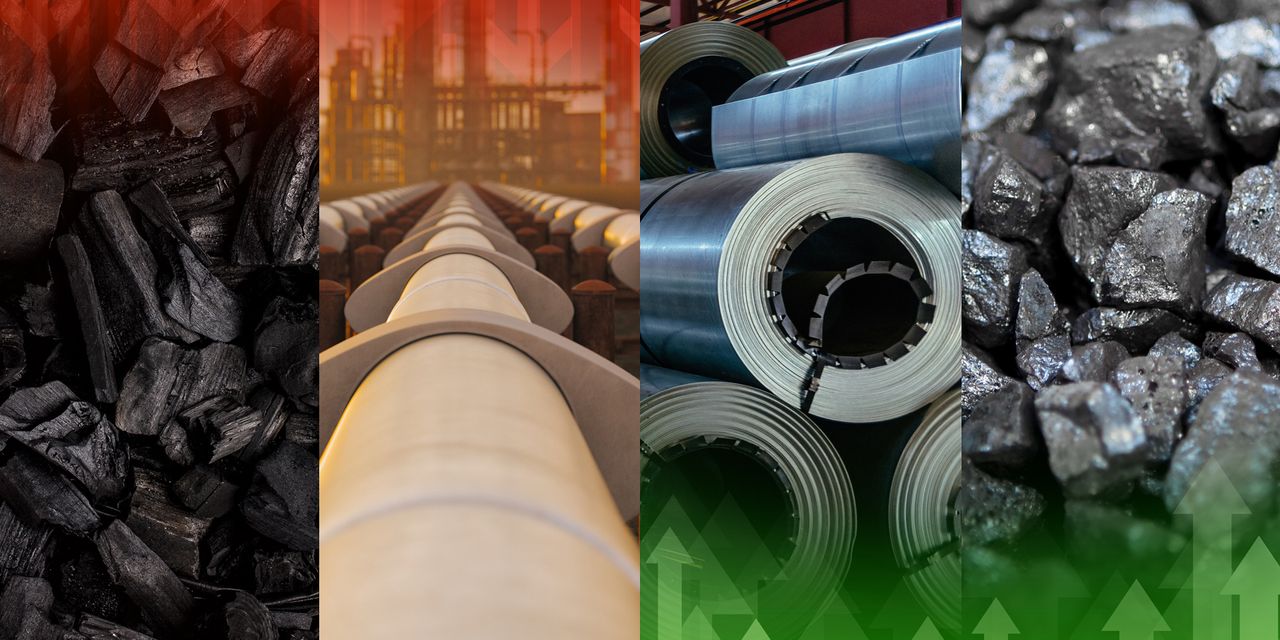Commodities declined in the first quarter, with the energy sector leading the way lower, as markets were jolted in March by sudden stress in the U.S. banking system. Prices for natural gas have lost more than half of their value and touched their lowest level in more than two years.
Fear that interest rates will be higher for longer quickly transitioned to views that there will be cuts in rates, says Albert Chu, portfolio manager at Newton Investment Management. That led to growth areas like technology getting a “bid at the expense of ‘value’ assets,” while fears of a banking contagion also started to dent demand.
As of March 30, the S&P GSCI
SPGSCI,
a benchmark for investments in the commodity markets, eyed a decline of more than 7% for the first quarter. “Risk aversion, triggered by persistent rate hikes, coupled with idiosyncratic risks such as warmer-than-normal weather conditions, have resulted in synchronous downsides and created weakness” in commodities, says Hakan Kaya, senior portfolio manager of the Neuberger Berman Commodity Strategy
NBCM,
exchange-traded fund.
Energy fell the most, with the S&P GSCI Energy
SPGSEN,
index down 12% quarter to date. Natural-gas prices on the New York Mercantile Exchange
NG00,
NGK23,
lost 53% in the first three months of the year, as of March 30, and touched their lowest finish in about two-and-a-half years earlier this month. Newcastle coal futures on ICE Futures Europe
NCFK23,
declined by 56%, after prices more than doubled last year. U.S.
CL.1,
CLK23,
and global benchmark
BRN00,
BRNM23,
crude futures trade more than 7% lower for the quarter.
Energy suffered from a knee-jerk reaction on banking contagion, says Chu. “Crude presented the quickest and very liquid way to de-risk.”
“Unnatural warm European weather and demand rationalization,” plus excess Chinese liquefied-natural-gas cargoes, quickly pressured the natural-gas market, he says.
Read: EIA expects lowest first-quarter natural-gas consumption in 5 years
Short term, weather will be a big factor, along with strength in LNG demand from China’s economic reopening and how fast industries ramp up activities on lower natural-gas prices, says Chu.
Some industrial metals are among this year’s decliners, with London Metal Exchange cash nickel prices down nearly 24% for the quarter. Russia is a large nickel producer, and the metal may have been less affected by the war in Ukraine than many initially feared, with nickel trading not sanctioned and continuing to reach consumers in China and elsewhere, says Kaya.
Still, the U.S. Inflation Reduction Act, which aims to lower costs for families and boost the use of clean energy, along with Europe’s version of the legislation, will in effect “start metalizing the world meaningfully,” says Kaya. Nickel and other metals play key parts in the clean-energy transition. “This can likely create a tailwind as the runway clears and nickel takes off,” Kaya says.
Read: Platinum is on track for a supply deficit for the first time in 3 years. Here’s why.
Bucking the overall trend of commodity declines, copper futures
HG00,
HGK23,
have climbed more than 7% for the quarter, and gold
GC00,
GCM23,
which briefly topped $2,000 an ounce in March, has gained more than 9% in the first three months of the year.
Read: What gold’s brief rise above $2,000 an ounce means as fears of banking crisis rattle investor nerves
Steel and iron-ore prices also climbed this year, with futures prices for U.S. Midwest domestic hot-rolled coiled steel
HRN00,
HRNK23,
up 49%, outpacing a more than 13% climb in futures prices for 62% iron-ore fines delivered to China
TIOJ23,
U.S. steel prices have rallied in sympathy with higher Chinese prices in the wake of the nation’s economic reopening, and capacity utilization has also been very weak, limiting supply, Chu says. Iron ore has been supported by the reopening of the Chinese economy, a rebound in Chinese steel prices, and a “stabilization” in Chinese real estate and its property market.
The commodities complex is still “climbing a wall of worry” right now, but the underlying fundamentals are holding, says Chu. “There will continue to be a bifurcation in commodities performance, as idiosyncratic factors will drive very meaningful divergence in returns.”
Read the full article here










